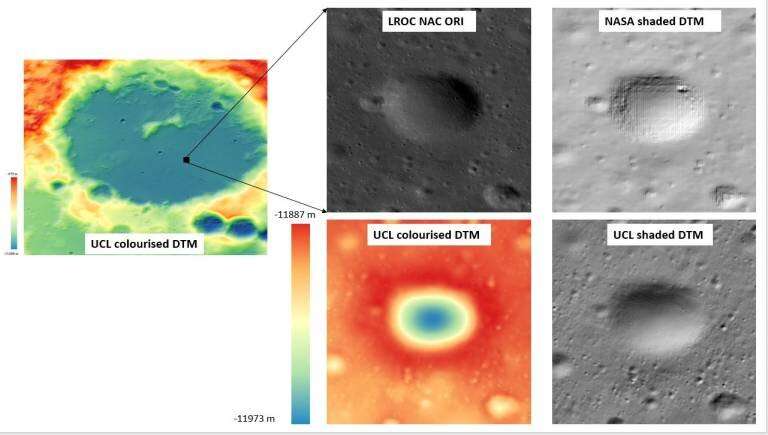These can help inform decisions about landing sites as well as navigation routes for rovers or manned vehicles."
Importantly for future moon mapping, Professor Muller and research associate Yu Tao (also UCL Mullard Space Science Laboratory) have developed a new method which eliminates the need for high resolution stereo images which are rare on the moon. This method uses machine learning to predict 3D shapes after training with nearly 400 pairs of images and their corresponding stereo-derived 3D models created by NASA's camera team.
Using this new method, the team created a large 3D mosaic covering an area of 260 km x 209 km, processed using machine learning from 370 images of the von Kármán crater on the far side of the Moon (the crater is 180km in diameter and up to 12 km deep). The MSSL team produced a technical report analyzing the images and 3D model in detail.
The 3D model and accompanying mosaiced image, which has a resolution of 50cm, are now available to view on NASA's web-based portal Moon Trek, which offers a suite of interactive tools for exploring the moon, and was developed for mission planners, space scientists, educators and other interested parties.
The techniques of Professor Muller and his team, applied to images of the surface of Mars, previously helped to untangle the mystery surrounding the ill-fated Mars lander Beagle 2. They produced higher-resolution images of the lander on the Martian surface, suggesting that it did touch down successfully.
NASA have announced 13 potential landing sites for their crewed mission to the moon, all close to the lunar south pole, where water-ice is believed to have collected in permanently shadowed areas over billions of years. These sites will now be studied in extensive detail before spacecraft can attempt to land there.
It is anticipated that UCL-MSSL will provide further 3D images of the Artemis landing sites in the New Year. All of these 3D data products will be made available through the ESA Planetary Science Archive Guest Storage Facility.



